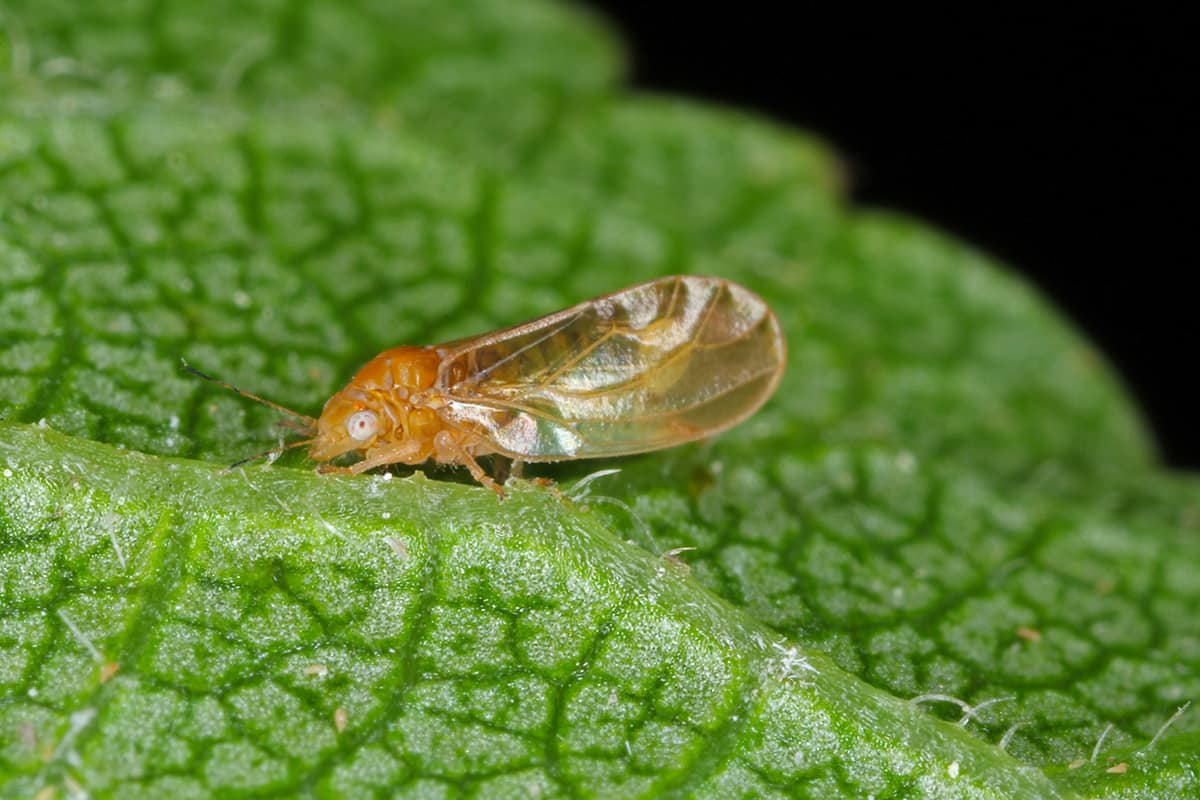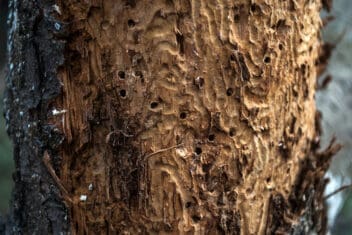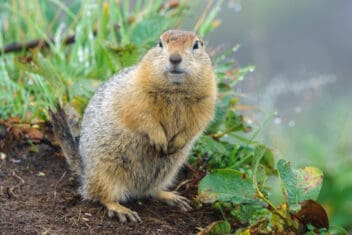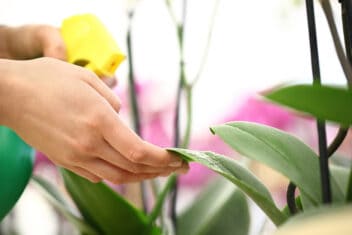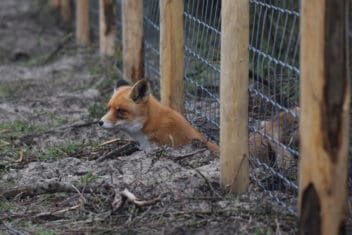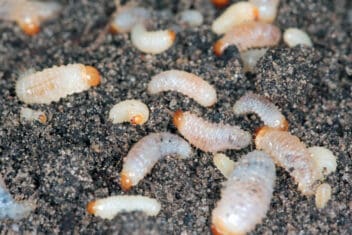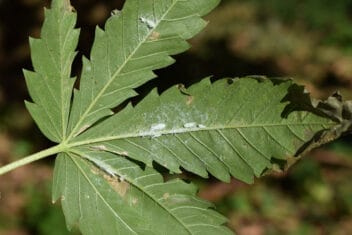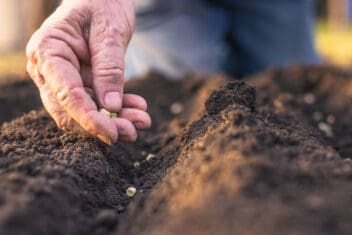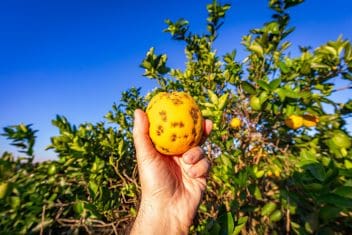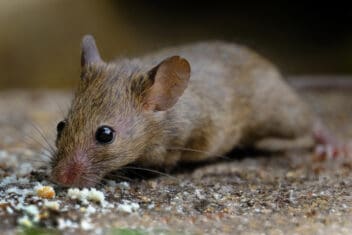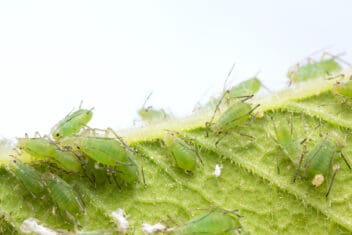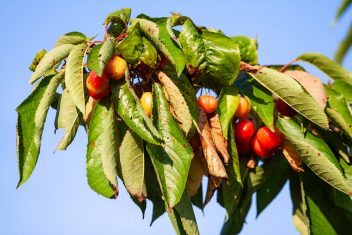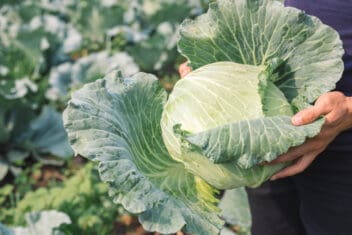When most gardeners think of common pests, they usually think of aphids, scale, snails, and slugs. You don’t often hear people talking about psyllids. The truth is, even if you’ve been gardening for just a short period of time, you probably have had psyllids in your garden, even if you haven’t noticed them.
In small numbers, they don’t do much damage. In large numbers, they will decimate your garden. This article will look at their life cycle, the damage they cause, and prevention methods. Ready to dive in?
What are Psyllids?
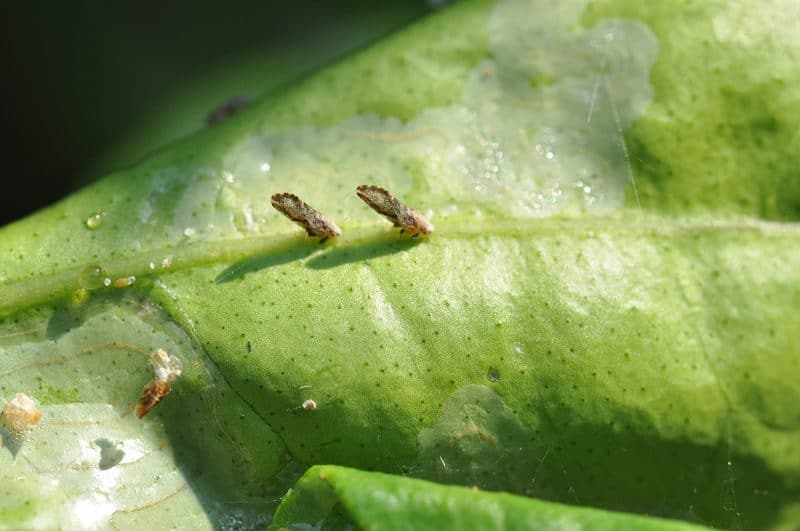
Psyllids (Psylloidea spp.) are also known as jumping plant lice. Unlike pests such as aphids, which can attack a wide range of plants, they require specific hosts.
That means they only attack and feed on one plant type and its close relatives, rather than anything and everything. If food is short, they may switch to a different plant of the same species, but you’ll never see a tomato psyllid on a lemon tree.
Psyllids are abundant with over 100 different types. They feed on sap, piercing the surface of plants, then excrete honeydew. This is a sticky substance loved by ants and wasps, and it also causes sooty mold to form.
That sucks because not only is your plant losing vigor through the feeding, they’re now also having to fight sooty mold.
In other words, they might be tiny, but you don’t want to let these pests run amock in your garden.
Lifecycle of Psyllids
Although all psyllid species are different in some ways, they basically go through a similar process in their lifecycle. Within days of emerging, they mate and lay up to 500 eggs over 21 to 40 days. In some areas, they will lay up to 800.
The eggs are tiny, but you usually can see them with the naked eye. They range in color shades from yellow to white or clear. They are connected to the plant by tiny threads. The eggs can be laid in clusters anywhere on the plant but often are on the edges of leaves where they are easily seen.
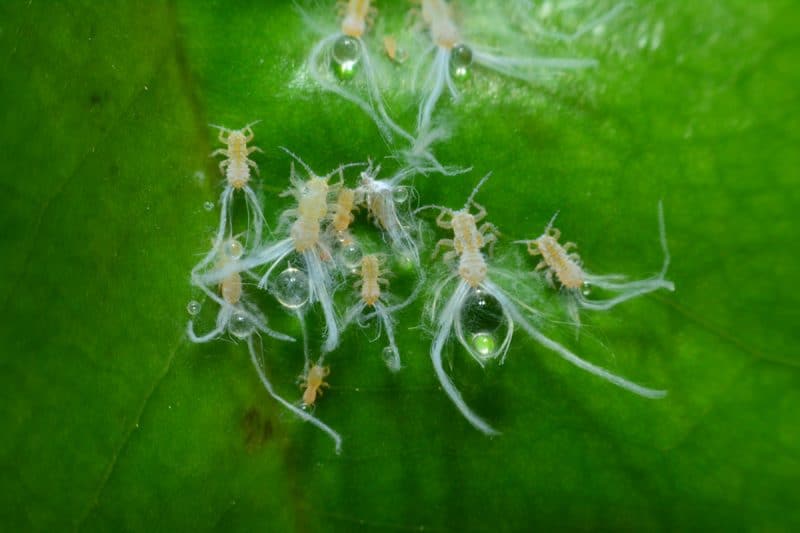
Newly hatched psyllid go through five stages in around 12 to 21 days before becoming a winged adult. Numbers reach their peak in the spring when the host plants are at their most plentiful and the weather is warm.
Adults are brown or green or a mixture of both, and have white or yellow markings. Winged adults look similar to a small cicada or a large aphid. Nymphs look a little like scale.
Most varieties will have up to five generations over the season, if not more. At average temperatures of 65ºF, the lifespan of a psyllid is about 35 days. During that time, they devour the sap in your plants.
Psyllids want that sweet, sticky sap running through stalks, leaves, and offshoots. They access it by inserting a stylet into a soft part of the plant and sucking it out. The problem becomes worse as the infestation reaches large numbers.
Part of the eating cycle is excretion. Psyllids excrete honeydew, which is attractive to ants and wasps on account of how sweet it is.
Some species also excrete a waxy substance called pellets, strands, or lerps. These are honeydew droplets that have crystalized.
In the cooler months, activity and damage are minimal. Use this time to clean, weed, and prepare for the next season of psyllids.
Signs of This Pest in Your Garden
Although infestations of any pest will cause issues in your garden, there are some signs to watch for that indicate psyllids specifically.
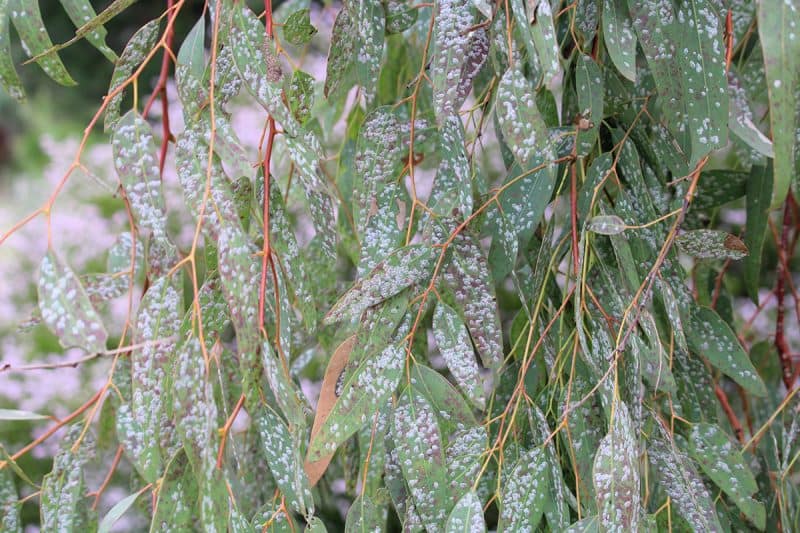
- Sudden and severe wilting of plants. If you suddenly notice wilting, but can’t see any cause, check carefully for psyllids and their eggs. They’ll jump and scatter when you come near.
- Honeydew on the plants. Sticky plants that look dirty are usually covered in honeydew. This is excreted by psyllids (as well as aphids) and causes sooty mold. Honeydew also attracts ants and wasps to the plant.
- Psyllid Yellows. The plant foliage turns yellow or mottled and new shoots are yellow.
- Loss of vigor. Plants that are subject to an infestation often lose their energy to grow and produce. That’s because the psyllids extract a huge amount of sap.
- Sooty mold. This is a major issue with sap-sucking plants. Read our article on sooty mold to learn how to identify it and treat it.
Types of Psyllids and the Plants They Love
There are lots of psyllid species. Here are the ones you’ll most commonly see in your garden.
Tomato and Potato psyllids
Tomatoes and potatoes are extremely common plants for this pest to be found on. Nearly all gardens at some point will have psyllids visit, but especially on tomatoes and potatoes.
Psyllids cause potato plants to lose vigor and produce fewer and poorer quality yields. Even the taste can be affected. Potatoes from infected plants often produce overly earthy-tasting tubers.
On tomato plants, yields are negatively affected, and many plants give up trying to form tomatoes as their energy has been sucked out.
This species also targets:
- Sweet potato
- Capsicum
- Chili
- Eggplant
Olive Psyllids
As the name suggests, this species live on and consume the sap of olive trees. Olive psyllids cause leaves and flowers to drop off prematurely. This in turn affects yield. When there are a large number of bugs on an olive tree, you will often find that you won’t have a good harvest.
Trust me; I’ve experienced olive psyllids. In normal years, my olive trees produce an abundance of fruit. One year I noticed two of the trees had suddenly lost a huge amount of leaves and flowers. I discovered this pest – and a lot of them.
Needless to say, those two trees didn’t produce any olives that year and actually took two seasons to recover.
Citrus Psyllid
This species is originally from Asia but is now endemic in many parts of the United States and Mexico. Its presence has been particularly felt in Florida. The adult is tan colored with mottled wings and body. The citrus psyllid holds its bottom-up to a very distinctive 45º angle.
The citrus psyllid causes a nasty disease called greening disease (Huanglongbing). The copious feeding by this psyllid damages citrus by causing leaves to twist up as they mature.
When psyllids and nymphs feed on a tree they can infect it with bacteria which is then transferred to other citrus trees when they move between plants. This bacteria can kill a citrus tree in a matter of a few seasons.
Unfortunately, citrus psyllids feed on a number of citrus varieties including:
- Lemon
- Orange
- Lime
- Mandarin
- Grapefruit
- Kumquat
- Curry leaf
- Lime berry
Pear Psyllid
Pear psyllids are similar to citrus psyllid in that they cause huge amounts of long-lasting damage to the tree. Like all psyllid, they inject a toxin when feeding on plants. This causes the tree to blacken in affected areas. The burning also affects the fruit of pears.
Control this Common pest
There are many ways to control psyllids, but I find the best way is to keep them out of the gardens by being proactive.
- Remove weeds and debris. Psyllids overwinter in weeds, so make sure you clear these away from plants, especially trees.
- Use neem oil. Regular applications of neem oil make the sap unpalatable to psyllids and any other sap-sucking and leaf-munching pests.
- Insecticidal soap. This is a good option when you notice the presence of psyllids and want a knock-down effect.
Don’t try to prune psyllids out because they’re hyper-mobile. They will just move to another branch you’re not pruning out, and you will spread the pests as you walk through your orchard or garden as you dispose of the infected branches.
Introduce Natural Predators
This is by far my preferred method of control. It’s perfect for several reasons. Firstly, you are letting mother nature do her thing, and secondly, this should prevent any build-up of psyllid numbers because the predators are already there. They include:
- Ladybugs
- Lacewing larvae
- Parasitic wasps
- Pirate bugs
You can also use psyllid-specific traps. See your local plant nursery for advice on these. I generally won’t use them unless I see the bugs in my food garden or orchard.
You can reduce the chances of being affected by psyllids as well by only introducing plants purchased from a reputable seller.
Psyllids are not a death toll for your garden, but you must get on top of the numbers the moment you see them.
